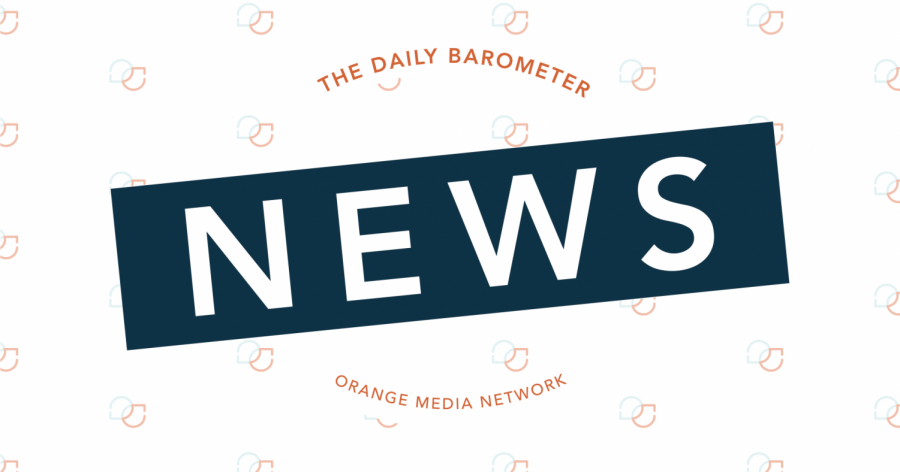Obstacles, barriers attributed to low turnout for college-aged voters
October 29, 2018
In the upcoming midterm election, younger generations make up a significant bloc of eligible voters in the United States. Yet, if past voting patterns persist, it is unlikely they will make an impact on the election and fully utilize their right.
In fact, younger voters typically fail to turnout in midterm elections, and have participated in lower numbers compared to older generations when they were in their youth, according to Pew Research Center. As a result, a political cycle persists which overlooks political and economic issues pertaining to younger generations.
So, why don’t young people — specifically, college students — vote?
“If you’re an 18-year-old coming into college, it’s a huge transition in life,” assistant professor in the Oregon State University School of Public Policy, Dr. Christopher Stout, said. “Most people aren’t thinking about [voting] until it’s too late.
Additionally, college-aged voters face a number of obstacles when it comes to casting a ballot. Many students lack the free time to cast their vote, have trouble registering or are unaware of details like polling place hours or voting and registration dates.
“Younger voters are more mobile and often more affected by obstacles to the ballot,” Associate Professor in the Oregon State University School of Public Policy Dr. Rorie Solberg, said. “States with easier access — automatic registration and vote by mail, for example — have greater participation by youth.”
Candidates also oftentimes fail to invest their time and resources to students on college campuses. As a result, the perspectives of young people are frequently missing from mainstream political discussions.
“If young people vote, then politicians will see them as a viable voting bloc, and they might devote more resources and attention to the issues that they care about,” Stout said. He emphasized that politicians could potentially engage in more discussions regarding minimum wage, college loans and the affordability of college if young people casted their ballots in larger numbers.
Associated Students of OSU Vice President Aiden Tariku emphasized this point.
“We rely on federal funding to attend universities,” Tariku said. “Voting for politicians whose policies encompass our needs can change a lot for students. It can mean the difference between having and not having access to higher education.”
Yet, despite the importance of these issues to college students, they still tend to vote in low numbers. As a result, the topics are continually ignored by politicians. Solberg calls this a self-reinforcing cycle.
“Since the younger folks don’t vote, politicians do not pay attention to the issues that are critical to that cohort,” Solberg said. “Because politicians don’t pay attention to those issues, these voters are not mobilized by elections.”
Organizations like the Oregon Student Association have partnered with ASOSU in order to increase the number of students registered on the campus, provide them with the information they need on candidates and ballot measures and encourage them to vote in the midterm election.
“ASOSU and OSA have seen significant voter registration increases,” said ASOSU President Justin Bennett. “This year, we were able to register over 3,100 students on campus. Getting those students to vote will now be our main focus.”
In addition, Bennett said that OSA and ASOSU have also included Unite the Vote efforts, which specifically recognize the traditionally marginalized communities who have experienced issues with access to voting.
“We highlight this history and let it underscore our work as a way to empower students and also recognize that voting has not always been easy,” Bennett said. “Many have had to fight for the right to vote, and now we want students to be exercising that right.”
Increased voting among college-aged voters could potentially have a large impact on the political landscape of the United States.
“If young people vote, you’d probably see more of a swing to the left, because young people are disproportionately Democratic,” Stout said.
When asked if he expects to see an increase in voting among young people in this election, Stout said yes.
“I think a lot of it will be driven by young women,” Stout said. “Women ages 18-44 are really enthusiastic about turning out, more so than men and women in general. So in this election, you do see an increase in, at least, enthusiasm beforehand. The Kavanaugh hearings may play a lot into that.”
Bennett ultimately emphasized the importance of students casting a ballot on Nov. 6.
“Voting is one of the most powerful tools in our democracy. When it goes unused, things don’t change,” Bennett said. “Voting will shape not just your future but those who come before you, and because of that, voting may be the most altruistic thing you ever do.”

















































































![Newspaper clipping from February 25, 1970 in the Daily Barometer showing an article written by Bob Allen, past Barometer Editor. This article was written to spotlight both the student body’s lack of participation with student government at the time in conjunction with their class representatives response. [It’s important to note ASOSU was not structured identically to today’s standards, likely having a president on behalf of each class work together as one entity as opposed to one president representing all classes.]](https://dailybaro.orangemedianetwork.com/wp-content/uploads/2025/03/Screenshot-2025-03-12-1.00.42-PM-e1741811160853.png)
























